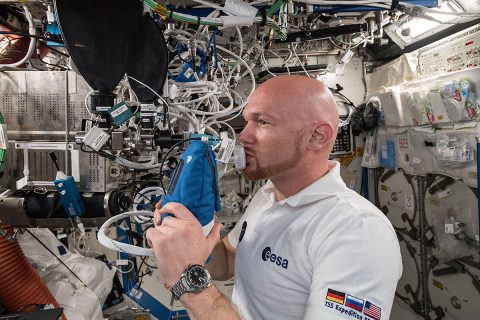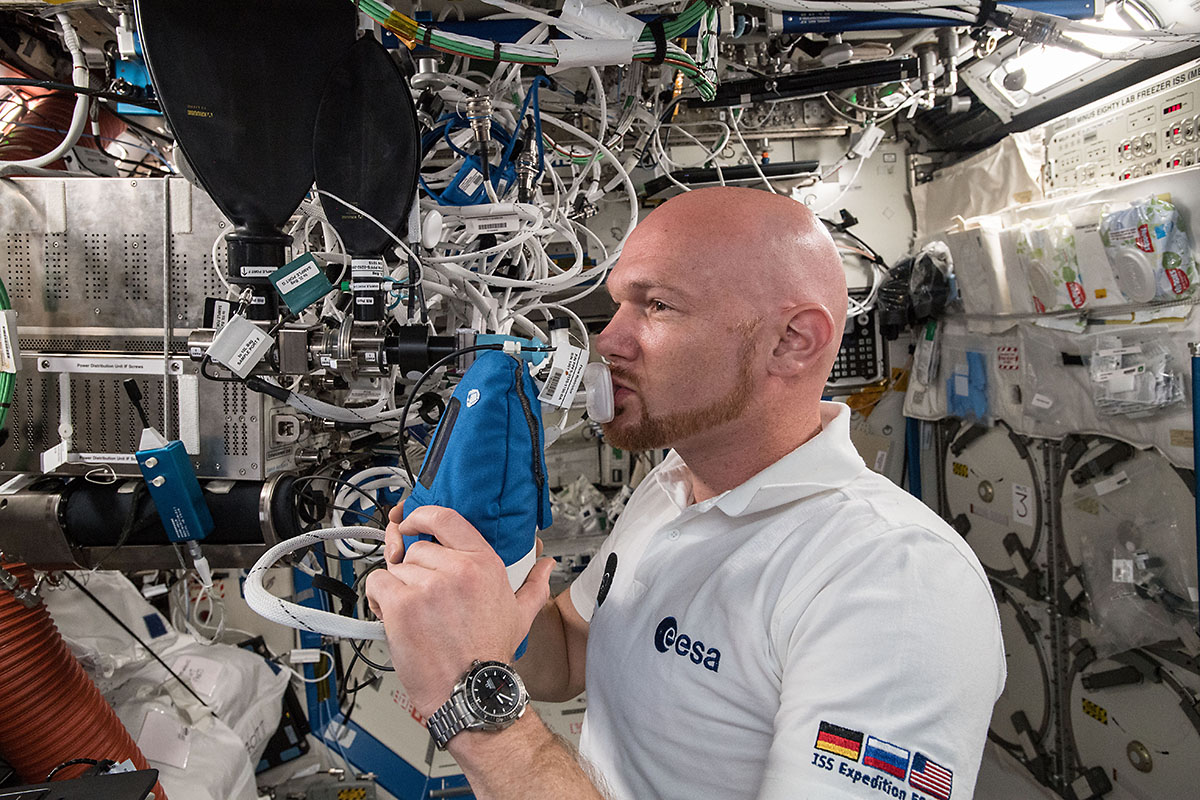 Washington, D.C. – NASA says help may be on the way for the millions of people around the world who suffer from asthma. Pioneering research in orbit is opening new avenues to understanding what goes wrong in patients with airway inflammation.
Washington, D.C. – NASA says help may be on the way for the millions of people around the world who suffer from asthma. Pioneering research in orbit is opening new avenues to understanding what goes wrong in patients with airway inflammation.
The results have contributed to the development of quick lung tests for an improved quality of life––both on Earth and in space. With each lungful of air, our bodies absorb oxygen and exhale waste products. In people with asthma, inflammation in the lung adds nitric oxide to exhaled air. Doctors measure the amount of nitric oxide exhaled by patients to help diagnose inflamed lungs and asthma.

Astronauts on the International Space Stattion (ISS) have been breathing for the sake of science as part of ESA-sponsored research.
Under the scientific lead of Lars Karlsson from the Karolinska Institute in Sweden, this research has been ongoing for more than 10 years, most recently within the Airway Monitoring experiments.
These experiments analyze the amount of nitric oxide exhaled by astronauts under different conditions in the weightless environment of space (e.g., normal pressure, reduced pressure in an airlock, pre-/post-spacewalk etc.)
The astronauts breathe into a specially developed instrument that measures nitric oxide levels. The purpose of taking reduced measurements in an airlock––normally used to exit a spacecraft for spacewalks, and is set at a 30% reduced pressure–– is to simulate conditions in future habitats on Mars, and is equivalent to being at 3000 m (9843 ft) altitude on Earth.
The device that measures the nitric oxide is lightweight, easy to use and accurate. The same instrument is currently used in clinics and hospitals, helping asthmatics and offering a quick and cheap way to diagnose lung problems. It was developed in close collaboration between the medical technology industry and the researchers at Karolinska Institute.
In a similar collaboration with the pharmaceutical industry, the same researchers developed a nitric oxidedonating drug (Supernitro) with a uniquely selective effect in lung circulation. The drug widens the blood vessels and counteracts life-threating increases of the local blood pressure.
Understanding the effects of weightlessness and reduced pressure on airway health will help space explorers monitor, diagnose and treat lung inflammation during spaceflight. This information is key to ensuring the health and safety of astronauts on longer missions beyond Earth’s orbit.
For more information, view the full publication here. For daily updates on the science happening aboard the space station, follow @ISS_Research, Space Station Research and Technology News, or our Facebook. For opportunities to see the space station pass over your town, check out Spot the Station.



